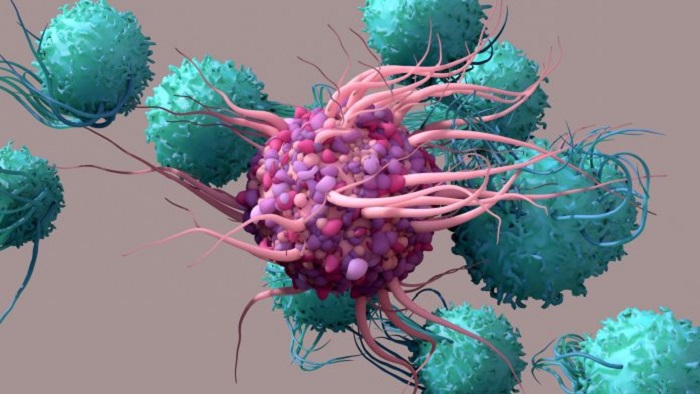Scientists at the Indian Institute of Science (IISc) in Bengaluru have pioneered an innovative approach aimed at detecting and eradicating cancer cells, particularly those that comprise solid tumor masses. They have engineered hybrid nanoparticles, composed of both gold and copper sulphide, capable of exterminating cancer cells through heat and facilitating their identification via sound waves, as detailed in a study published in ‘ACS Applied Nano Materials’.
IISc, headquartered in Bengaluru, underscores the pivotal role of early detection and treatment in combating cancer. Copper sulphide nanoparticles have previously garnered attention for their utility in cancer diagnosis, while gold nanoparticles, adaptable for chemical modification to target cancer cells, have demonstrated anti-cancer properties. In this current investigation, the IISc research team elected to merge these two elements into hybrid nanoparticles.
“These particles exhibit photothermal, oxidative stress, and photoacoustic characteristics,” remarks Jaya Prakash, Assistant Professor at the Department of Instrumentation and Applied Physics (IAP), IISc, and one of the corresponding authors of the paper. The paper designates PhD students Madhavi Tripathi and Swathi Padmanabhan as co-first authors.
When exposed to light, these hybrid nanoparticles absorb it, generating heat capable of destroying cancer cells. Furthermore, these nanoparticles release singlet oxygen atoms, which are toxic to cells. “Our aim is to employ both these mechanisms to eliminate cancer cells,” elucidates Jaya Prakash.
The researchers assert that the nanoparticles can also serve as a diagnostic tool for specific cancers. Conventional methods, such as standalone CT and MRI scans, necessitate skilled radiology professionals to interpret the images. The photoacoustic property of these nanoparticles enables them to absorb light and produce ultrasound waves, offering high-contrast detection of cancer cells upon reaching them.
The ultrasound waves generated by these particles provide enhanced image resolution, as sound waves scatter less within tissues compared to light. Scans derived from these ultrasound waves offer superior clarity and the capacity to measure oxygen saturation in tumors, bolstering their detection.
“You can seamlessly integrate this with existing detection or treatment systems,” affirms Ashok M Raichur, Professor at the Department of Materials Engineering and another corresponding author.
For instance, the nanoparticles can be triggered to generate heat by shining a light on them using an endoscope typically employed for cancer screening.
Unlike previously developed nanoparticles, which have limited applications due to their larger size, the IISc team employed a novel reduction technique to deposit minuscule gold seeds onto the copper sulphide surface. The resultant hybrid nanoparticles, measuring less than 8 nm, hold the potential to navigate through tissues effortlessly and reach tumors.
The researchers are optimistic that the nanoparticles’ diminutive size will enable them to exit the human body naturally without accumulating, although extensive studies are required to ascertain their safety for internal use.
In their recent study, the researchers have tested these nanoparticles on lung and cervical cancer cell lines in the laboratory. Their next step involves advancing these results for clinical development.
















